7 Questions For Author Liz Kleinrock
JWA talks to author and educator Liz Kleinrock about her new book, What Jewish Looks Like, and about making Jewish communities more inclusive.
JWA: Tell us about your new book, What Jewish Looks Like.
Liz Kleinrock: What Jewish Looks Like is the book I wish existed when I was growing up as a young Jewish person of color. There are so many misconceptions both within and outside the Jewish community about who Jews are, what we look like, where we live, and how we think. This book celebrates the complexity, diversity, and beauty of the global Jewish community and aims to remind readers that there is no “one right way” to be Jewish.
JWA: Who do you see as the book’s intended audience?
LK: The book’s marketed audience is for middle grade children around ages 8 to12, but I absolutely believe What Jewish Looks Like is for readers of all ages. I wouldn’t hesitate to give it to an adult who’s looking to learn more about Jewish history and the Jewish community. Even if you’re familiar with these topics, there will probably be something or someone new to learn about. Even my synagogue’s rabbi didn’t know of all the people highlighted in the book!
JWA: How did you meet your collaborators, Caroline Kusin Pritchard and illustrator Iris Gottleib?
LK: Social media can be a hard place to exist as Jew, but it can also be an incredible connector. Caroline and I actually first met on Instagram through our backgrounds as educators, book lovers, and Jewish women, and our exchanges grew into a real life friendship! She is an incredibly kind, caring human, the best hype woman I could ask for, and such a talented writer.
Caroline and I learned of Iris’s work alongside our publisher when we were looking for the best-fit illustrator for this project. It was important that the illustrator be Jewish (ideally a Jewish person with multiple layers to their identity), and someone who could communicate abstract ideas through art. Iris was the perfect match, and we’re so thrilled their schedule allowed them to partner with us for this book.
JWA: You mention in the book that your inspiration for this project came in part from your experience growing up both Jewish and Korean American, and often being told that you don’t “look” Jewish. How would you encourage Jewish community spaces to be more welcoming to people of color?
LK: It’s important for white and white-presenting Jews to reflect on their biases about what Jewish people look like. I’ve been in Jewish spaces where I’ve been warmly welcomed, but under the assumption that I’m an outsider. Oftentimes, the intent isn’t malicious. However, folks’ biases lead them to act on the belief that someone with darker skin must not be Jewish, or must be a convert. For example, once when the rabbi instructed congregants to open their siddurim, a complete stranger leaned over to open my book for me and pointed to the Hebrew. I’m sure they were trying to be helpful, but it came across as insulting and patronizing.
JWA: You also mention that your queerness set you apart in Jewish community spaces. What advice would you give young queer Jews who are working to make their synagogues more queer-inclusive?
LK: Respectfully, I’d actually redirect this question to synagogue leaders in order to avoid putting the responsibility on queer Jews to find solutions to this problem. To begin, leaders can think about the types of gendered rituals and language that reinforce the gender binary (the assumption that everyone is either a man or a woman.) Is there gender inclusion when it comes to marriages, b’mitzvahs, and conversions? Are Hebrew schools teaching students about queer Jews from history and who are current leaders in the community? Are queer Jews able to see themselves reflected in the programming and leadership of the synagogue? Are clergy fluent in LGBTQ+ terminology and issues in order to support those who may come to them for guidance? The Welcoming Shuls Project is a great resource for folks to check out if they’re interested in learning more.
JWA: Your book features profiles of Jewish figures across the globe and throughout time. How did you and your collaborators decide who to include?
LK: There is a massive spreadsheet that exists in my Google drive with all of the Jewish people we considered for this book! Caroline and I started by creating a list of individuals that was organized by different identity markers, such as race, gender, denomination, occupation, location, whether the person is deceased or alive, etc. We wanted there to be balance in all of these factors in order to really highlight how diverse the Jewish community is in all aspects, and for this book to serve as a mirror for as many readers as possible.
JWA: Are there any Jewish rituals that you find grounding in your daily life?
LK: I grew up observing Shabbat with my family every Friday evening. When I was a teenager, I was occasionally frustrated that I had to be at home for dinner on Friday nights, but looking back, I have such a deep appreciation for this quality time with my family. I love that Shabbat encourages us to slow down, reset, and rest every single week.

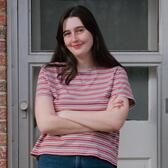
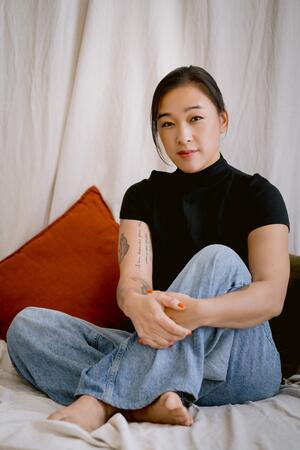
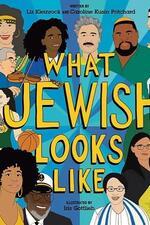
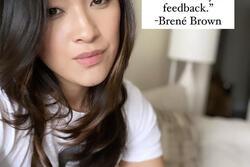

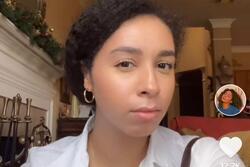


So excited to learn about What Jewish Looks Like! As I was growing up, the Jewish space was exclusively Ashkenazi. This discouraged my parents from pursuing Hebrew school for me when I asked to attend. My son's religious school only has one family which isn't the result of interracial marriage, transracial adoption, or Jews by choice. He has one Jewish, one Black, and two Mexican grandparents. We are so blessed now that things are changing.